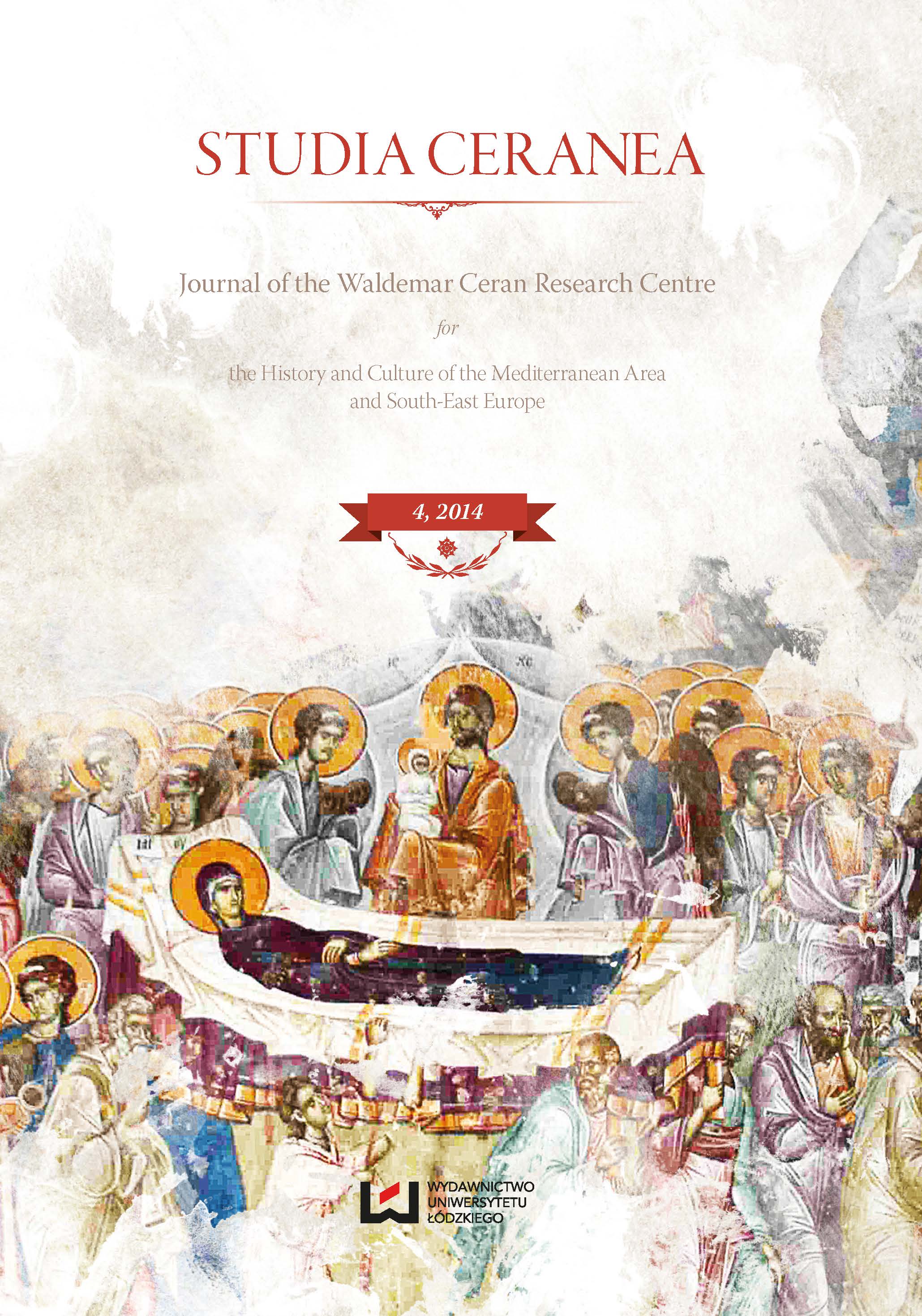Selected Elements of Animated Nature Associated with the Birth of Jesus in the Bulgarian Oral Culture and Apocryphal Narratives
DOI:
https://doi.org/10.18778/2084-140X.04.05Keywords:
Nativity in folklore, etiological legend, fauna in oral culture, Holy Mother’s curse, cosmic silenceAbstract
The article attempts to extract textual and extratextual planes on which representatives of fauna made their mark in the folklore of the South Slavs, mainly Bulgarians; in their oral literature, rituals, and beliefs, juxtaposed with selected Apocrypha, primarily from the Protoevangelium of James, confronted with the Scripture. The analysed texts (legends, folk tales, ritual songs performed during Christmas) relate to the birth of Christ in Bethlehem and placing him in a manger – the events of Night of Bethlehem and the flight of the Holy Family to Egypt. The excerpted texts of fairy tales and legends marginalise the theme of the Divine Birth, focusing on the figure of the Mother of God and her actions: meeting with St. Tryphon, rejecting the child, receiving lessons on motherhood from the frog, escaping with the Child to Egypt. The birth of Jesus is used as an excuse to tell a story of an etiological character (theme cursing animal or plant), often based on ritual custom and referring to it, such as clipping vines. Just as in the case of fairy tales and legends, folk song uses the birth of Jesus to explain the genesis of some of the characteristics and phenomena of nature. Presentation of animals in ritual songs occasionally refers to the economic sphere (the shepherds slept, and their flock wandered away), while wild animals are the object of punishment or reward. The Apocrypha known among the South Slavs mention animals in situations encountered also in the Bulgarian oral literature – the cosmic silence when fauna and flora freezes in anticipation of the birth of the Young God. The quoted texts of the Bulgarian oral culture referring to the theme of the Nativity of the Lord, the Gospel inspiration or even interaction with the apocryphal text fades into the background. The content of the stories and folk songs seems to be primordial in relation to the processed content of the Gospel; biblical characters and situations are introduced to oral stories already in circulation, creating texts that are testament of the so-called folk Christianity.
Downloads
References
Българска митология. Енциклопедичен речник, ed. А. Стойнев, София 1994.
Google Scholar
Dzieciństwo Pana, Ewangelia Tomasza (Dzieciństwa), ed. et trans. M. Starowieyski, [in:] Apokryfy Nowego Testamentu. Ewangelie apokryficzne, vol. I, Fragmenty. Narodzenie i dzieciństwo Maryi i Jezusa, ed. idem, Kraków 2003.
Google Scholar
Ewangelia Dzieciństwa Ormiańska, ed. M. Starowieyski, trans. E. Nowak, [in:] Apokryfy Nowego Testamentu. Ewangelie apokryficzne, vol. I, Fragmenty. Narodzenie i dzieciństwo Maryi i Jezusa, ed. idem, Kraków 2003.
Google Scholar
Forstner D., Świat symboliki chrześcijańskiej. Leksykon, trans. W. Zarzewska, P. Pachciarek, R. Turzyński, Warszawa 1990.
Google Scholar
Георгиева A., Социална функция на клетвата в народната песен, „Български фолклор” 8.1, 1982, p. 98–105.
Google Scholar
Георгиева A., Действието чудо в етиологичните легенди, „Български фолклор” 12.2, 1986, p. 11–19.
Google Scholar
Георгиева A., Етиологичните легенди в българския фолклор, София 1990.
Google Scholar
Георгиева И., Българска народна митология, София 1993.
Google Scholar
Гура A.B., Символика животних в славянской народной традиции, Москва 1997.
Google Scholar
Gieysztor A., Mitologia Słowian, Warsaw 1980.
Google Scholar
The Holy Bible – Revised Standard Version Catholic Edition, London 1966.
Google Scholar
Иванов Й., Культ Перуна у южных славян, „Известия Отделения русского языка и словесности Императорской/Российской Академии Наук” 8, 1904.
Google Scholar
Илиев A.T., Растителното царство в народната поезия, обичаите, обредите и поверията на българите, „Сборник за народни умотворения, наука и книжнина” 7, 1892, p. 385–386.
Google Scholar
Калев (Сунгуларе) P., Варианти на обредите Пеперуда и Герман, „Български фолклор” 12.3, 1986, p. 47–58.
Google Scholar
Kłosińska J., Sztuka bizantyńska, Warszawa 1975.
Google Scholar
Koziara S., Losy frazeologizmów biblijnych z nazwami ptaków w języku polskim, [in:] Z problemów przekładu i stosunków międzyjęzykowych, vol. II, ed. T. Żeberek, T. Borucki, Kraków 2002.
Google Scholar
The Latin Infancy Gospel (Aroundel Form), [in:] The Apocryphal Gospels: Texts and Translations, ed. B. Ehrman, Z. Plese, New York 2011.
Google Scholar
Лавров П.А., Апокрифичeские тексты, Санкт-Петербург 1899.
Google Scholar
Lurker M., Słownik obrazów i symboli biblijnych, trans. K. Romaniuk, Poznań 1989.
Google Scholar
Majewski E., Kukułka w mowie, pieśni i pojęciach ludu naszego, „Wisła. Miesięcznik geograficzno-etnograficzny” 12, 1898, p. 385–408.
Google Scholar
Маринов Д., Избрани произведения в пет тома, vol. I, pars 1, Народна вяра, София 2003.
Google Scholar
Повест на архиепископ Яков Йерусалимски за рождението на Богородица преславната наша владичица и вечнодева Мария, [in:] Стара българска литература, vol. I, Апокрифи, ed. Д. Петканова, София 1981.
Google Scholar
Protoewangelia Jakuba, ed. et trans. M. Starowieyski, [in:] Apokryfy Nowego Testamentu. Ewangelie apokryficzne, vol. I, Fragmenty. Narodzenie i dzieciństwo Maryi i Jezusa, ed. idem, Kraków 2003.
Google Scholar
Sakowicz E., Znaczenie zwierząt w religiach świata, „Forum Teologiczne” 6, 2005.
Google Scholar
Strzelczyk J., Mity, podania i wierzenia dawnych Słowian, Poznań 1998.
Google Scholar
Тодорова И., Кукувицата в българската фолклорна култура (Рефлекси на митологичното мислене), „Годишник на Асоциация за антропология, етнология и фолклористика Онгъл” 10, 2012, p. 231–252.
Google Scholar
Wasilewski J.S., Tabu, Warszawa 2010.
Google Scholar
Вълчинова Г., Между езичество и християнство: свети Трифон в българските народни представи, „Български фолклор” 15.2, 1989, p. 15–25.
Google Scholar
Вражиновски T., Народна митологиjа на Македонците, Скопje–Прилеп 1998.
Google Scholar
Wrocławski K., O sposobie przyjmowania inspiracji Ewangelią (na podstawie macedońskiej legendy Bogurodzica i żaba), [in:] Biblia Slavorum Apocryphorum I. Vetus Testamentum, ed. G. Minczew, M. Skowronek, I. Petrov, Łódź 2009, p. 233–238.
Google Scholar
Złota moneta za słowo. Bułgarskie bajki i legendy ludowe, ed. G. Minczew, Łódź 2006.
Google Scholar
Zowczak M., Biblia ludowa. Interpretacje wątków biblijnych w kulturze ludowej, Wrocław 2000.
Google Scholar
Downloads
Published
How to Cite
Issue
Section
License

This work is licensed under a Creative Commons Attribution-NonCommercial-NoDerivatives 4.0 International License.













